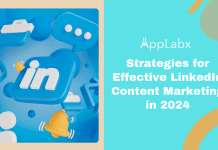Key Takeaways
- Tailored Approach: Discover how personalization drives B2B success in Singapore, from crafting buyer personas to customizing content.”
- “LinkedIn Power: Leverage the platform’s networking prowess for targeted B2B lead generation in Singapore’s thriving business environment.”
- “Data-Driven Success: Learn the art of measuring, refining, and optimizing strategies for impactful B2B lead generation campaigns in Singapore.
In the bustling metropolis of Singapore, where innovation converges with tradition and business prowess intertwines with cultural diversity, the realm of B2B lead generation takes on a unique and dynamic character.
Picture a landscape where skyscrapers reach for the heavens while traditional shophouses line historic streets, where global conglomerates stand shoulder-to-shoulder with nimble startups, all united by the pursuit of success in a thriving business ecosystem.
Amidst this vibrant backdrop, the art of B2B lead generation emerges as a powerful force, a driving factor behind business growth and sustainability.
In a market where every interaction is an opportunity, and every connection could pave the way to a valuable partnership, understanding the top strategies for successful B2B lead generation becomes not just a choice, but a necessity.
As digital winds sweep across the Lion City, transforming the way business is conducted and connections are forged, the strategies that resonate are those that harmonize innovation with tradition, data-driven insights with personalized engagement.
This journey into the heart of B2B lead generation in Singapore is a venture into the world of strategic networking, compelling content, and technological marvels, all working in symphony to capture the attention of discerning B2B buyers in this thriving Southeast Asian hub.
But before we delve into the strategies that can illuminate the path to B2B lead generation success, let’s take a moment to appreciate the landscape that forms the canvas for these endeavors.
Singapore, a global financial center and a technological haven, offers an ecosystem that is both challenging and rewarding for B2B players.
It’s a city-state where innovation and adaptability are woven into the fabric of daily life, and where the competitive spirit thrives in an environment that demands nothing short of excellence.
In the pages that follow, we’ll traverse the avenues of content marketing prowess, where meticulously crafted narratives resonate with the minds of B2B decision-makers; we’ll ascend the staircase of thought leadership, where becoming an industry authority transforms a brand from just another player to a trusted partner; and we’ll navigate the intricacies of LinkedIn, where connections take on a digital form that holds the potential to redefine B2B networking.
But that’s not all—our journey also winds through the world of account-based marketing, where personalization reigns supreme, and marketing automation, where the repetitive is automated, freeing creative minds to innovate.
We’ll measure the metrics that matter, and we’ll decode the mysteries of successful lead generation campaigns, each step guided by the beating pulse of Singapore’s business rhythm.
As the digital marketing landscape continues to evolve, so do the strategies that guide the dance of B2B lead generation.
In this guide, we bring you not just a list of strategies but a symphony of insights, a collection of strategies that reflect the dynamic nature of business in Singapore—an ode to the present and a glimpse into the future.
So, let’s embark on this journey together, uncovering the top strategies that will shape successful B2B lead generation in the enigmatic and ever-evolving landscape of Singapore.
Before we write more about this article, we like to share who we are.
About AppLabx
From developing a solid marketing plan on LinkedIn to creating compelling content on LinkedIn, optimizing for search engines, leveraging social media, and utilizing paid advertising on LinkedIn, AppLabx offers a comprehensive suite of digital marketing services on LinkedIn designed to drive growth and profitability for your business.
AppLabx is well known for helping companies and startups use LinkedIn Marketing to drive web traffic to their websites and web apps.
At AppLabx, we understand that no two businesses are alike. That’s why we take a personalized approach to every project, working closely with our clients to understand their unique needs and goals, and developing customized strategies to help them achieve success.
If you need a digital consultation, then send in an inquiry here.
Top Strategies for Successful B2B Lead Generation in Singapore
- Understanding the Singapore B2B Landscape
- Target Audience and Buyer Personas
- Content Marketing Excellence
- Leveraging Thought Leadership
- Networking and Relationship Building
- Utilizing LinkedIn for B2B Lead Generation
- Implementing Account-Based Marketing (ABM)
- Incorporating Marketing Automation
- Measuring and Optimizing Lead Generation Campaigns
1. Understanding the Singapore B2B Landscape
In the heart of Southeast Asia lies the bustling business hub of Singapore, where the confluence of global commerce, innovation, and strategic location has given rise to a vibrant B2B landscape.
Understanding the intricacies of this landscape is crucial for crafting effective lead generation strategies that resonate with the unique characteristics of the Singapore market.
Diverse and Thriving Industries
Singapore’s economy is a tapestry woven with diverse industries, each contributing to its economic prowess.
From finance and technology to manufacturing and logistics, businesses from around the world converge here to establish their presence and tap into the region’s growth potential.
Notably, the finance and technology sectors have experienced exponential growth, with Singapore emerging as a fintech and innovation hub in the region.
- Example: The financial sector in Singapore has witnessed remarkable growth, with banks and financial institutions operating in the country. This thriving sector presents lucrative opportunities for B2B partnerships, such as financial technology firms collaborating with established banks.
Global Connectivity and Trade
Singapore’s strategic location has positioned it as a gateway to the Asia-Pacific region.
The city-state’s world-class port and connectivity infrastructure have established it as a vital trade hub, attracting businesses engaged in international commerce.
Its Free Trade Agreements (FTAs) and business-friendly policies further incentivize businesses to operate from Singapore.
High Digital Adoption
Singapore’s tech-savvy population and government support have fostered a culture of digital adoption across industries.
B2B interactions are increasingly conducted through digital platforms, from procurement to collaboration and networking.
- Data: As of 2023, Singapore’s internet penetration rate stood at approximately 96.9%, indicating a high level of digital engagement.
Challenges and Opportunities
While Singapore offers an array of opportunities, it’s not without its challenges.
The competitive nature of the market demands innovative approaches to stand out.
High operational costs and limited land resources can pose hurdles, particularly for small and medium-sized enterprises (SMEs).
However, the city’s innovation ecosystem, skilled workforce, and access to capital present avenues for growth.
- Opportunity: With the rise of sustainable practices and ESG (Environmental, Social, and Governance) considerations, businesses that align with these values can tap into a growing market demand for responsible solutions.
Cross-Cultural Dynamics
Singapore’s multicultural society is reflected in its business landscape, where cross-cultural understanding is essential. Respect for cultural nuances and communication styles is paramount in B2B interactions.
- Example: When negotiating with businesses from different cultural backgrounds, understanding the concept of “face” in Asian cultures can significantly impact the success of negotiations9.
In navigating the intricate Singapore B2B landscape, businesses must be adaptable, innovative, and attuned to local dynamics. By harnessing the opportunities presented by diverse industries, digital transformation, and global connectivity, B2B lead generation strategies can be tailored to meet the demands of this dynamic market.
2. Target Audience and Buyer Personas
In the dynamic realm of B2B lead generation, understanding your target audience and creating well-defined buyer personas is akin to unlocking the gateway to successful engagement and conversion. In the context of the Singapore market, where businesses span diverse industries and cultures, a nuanced understanding of your audience becomes paramount.
Defining Your Target Audience
To effectively engage with B2B prospects in Singapore, you need a clear picture of who your ideal customers are.
This involves delving into the demographics, industries, pain points, and goals of your potential clients.
- Example: If your digital marketing agency specializes in providing SEO services, your target audience could include businesses in sectors such as finance, technology, and e-commerce that rely heavily on online visibility.
Creating Buyer Personas
Buyer personas are detailed, semi-fictional representations of your ideal customers. They provide insight into the goals, challenges, behaviors, and preferences of different segments of your audience.
- Example: Let’s consider a B2B software company that offers supply chain management solutions. They could create two buyer personas:
- Supply Chain Sam: Sam is a supply chain manager at a logistics company. He’s concerned about optimizing inventory levels and reducing transportation costs to enhance efficiency.
- Tech-Savvy Tina: Tina is a tech-savvy IT director at a manufacturing firm. She’s interested in tech solutions that can automate manual processes and improve overall operations.
Data-Driven Audience Research
Data and analytics play a pivotal role in defining your target audience and buyer personas. Utilize tools like Google Analytics, social media insights, and market research reports to gain actionable insights.
- Statistic: According to a survey by HubSpot, 42% of businesses cited a lack of quality data as a barrier to lead generation.
- Example: Analyze your website’s traffic data to identify which industries and job roles are showing the most interest in your content. This can help refine your target audience segments.
Addressing Pain Points and Goals
Understanding the pain points and goals of your target audience enables you to tailor your messaging and offerings to address their specific needs.
- Example: If you’re a provider of cybersecurity solutions targeting financial institutions in Singapore, your messaging could revolve around data protection, regulatory compliance, and safeguarding against cyber threats.
Personalization for Effective Engagement
Personalization is a cornerstone of successful B2B lead generation.
Craft your content and communication to resonate with the unique challenges and aspirations of each buyer persona.
- Statistic: According to a report, 72% of consumers say they now only engage with marketing messages that are personalized and tailored to their interests.
- Example: For the supply chain manager persona, you could create content about supply chain optimization strategies. For the tech-savvy IT director, content about the latest trends in supply chain technology and automation would be more relevant.
By creating well-defined buyer personas rooted in data and addressing the unique needs of your target audience, you position your B2B lead generation efforts to resonate deeply with businesses in the Singapore market, enhancing your chances of meaningful engagement and conversion.
3. Content Marketing Excellence
In the digital landscape of B2B lead generation, content is the currency that fuels engagement, builds trust, and drives conversions.
To achieve content marketing excellence in the context of the Singapore market, where business sophistication meets digital prowess, a strategic and data-driven approach is essential.
Crafting Valuable and Informative Content
Content marketing hinges on delivering value to your audience. Creating informative, relevant, and insightful content positions your brand as an industry authority and garners the attention of potential B2B leads.
- Statistic: According to Demand Gen Report, 96% of B2B buyers want content with more input from industry thought leaders.
- Example: If you’re a digital marketing agency, publishing a comprehensive guide on “Navigating the Singapore Digital Landscape: Trends and Insights” showcases your expertise and addresses the interests of businesses seeking to thrive in the local digital realm.
Addressing Pain Points and Challenges
Effective content addresses the pain points and challenges faced by your target audience. By offering solutions and insights, you position yourself as a partner capable of easing their burdens.
- Example: For businesses in Singapore’s competitive finance sector, a series of articles on “Navigating Regulatory Changes in the Singapore Financial Landscape” provides valuable guidance and positions your agency as a knowledge hub.
Leveraging Various Content Formats
Diversify your content portfolio to cater to different preferences and consumption habits.
From articles and blog posts to infographics, videos, webinars, and podcasts, the options are wide-ranging.
- Statistic: HubSpot’s research found that 54% of consumers want to see more video content from brands they support.
- Example: Hosting a webinar on “Optimizing E-commerce Strategies for the Singapore Market” allows you to engage your audience in real-time and demonstrate thought leadership.
Optimizing for SEO and Search Intent
A key facet of content marketing excellence is ensuring your content is discoverable.
By optimizing for relevant keywords and addressing user search intent, you enhance your content’s visibility on search engines.
- Statistic: Backlinko’s analysis shows that the average first-page result on Google contains 1,447 words.
- Example: If you’re targeting the keyword “Singapore B2B Marketing Trends,” create an in-depth article that not only highlights the trends but also provides actionable insights and data to support your claims.
Showcasing Case Studies and Success Stories
Highlighting your successful collaborations through case studies and success stories demonstrates the real-world impact of your services. Businesses seeking solutions will be drawn to stories of tangible results.
- Data: A study by Content Marketing Institute found that 77% of B2B buyers consumed case studies during the buying process.
- Example: Create a detailed case study highlighting how your agency’s lead generation strategies helped a Singaporean B2B company achieve a significant increase in qualified leads over a specific time period.
Leveraging User-Generated Content
Encourage satisfied clients to share their experiences through user-generated content (UGC). UGC adds authenticity and can resonate deeply with potential leads.
- Statistic: According to Adweek, UGC-based ads get 4 times higher click-through rates and a 50% drop in cost-per-click.
- Example: Feature testimonials from Singaporean businesses that have benefited from your lead generation strategies on your website and social media platforms.
By adhering to the principles of content marketing excellence, businesses can create a content ecosystem that not only educates and engages but also positions them as trusted partners within the intricate Singapore B2B landscape.
4. Leveraging Thought Leadership
In the fast-paced world of B2B lead generation, standing out requires more than just delivering a product or service—it demands becoming a trusted industry authority.
Thought leadership, a strategy that positions individuals or brands as go-to experts in their field, is a powerful approach to achieve this distinction.
In the context of the dynamic Singapore market, where business acumen intersects with technological innovation, thought leadership becomes a beacon guiding businesses toward success.
Defining Thought Leadership
Thought leadership goes beyond mere content creation—it’s about offering unique perspectives, valuable insights, and forward-thinking ideas that contribute to industry discourse.
It’s the art of becoming a voice of authority that others seek for guidance.
- Statistic: A LinkedIn survey found that 55% of B2B buyers use thought leadership content to vet organizations they’re considering partnering with.
- Example: Imagine you’re a business consultant in Singapore specializing in digital transformation. Your thought leadership could encompass articles, whitepapers, and presentations on “Navigating the Digital Transformation Landscape: Lessons from Singapore’s Trailblazers.”
Building Credibility and Trust
Thought leadership fosters credibility and trust by showcasing expertise. When businesses share insights backed by data and experience, they gain the confidence of their audience.
- Data: A study found that 60% of decision-makers believe thought leadership has led them to award business to an organization they were not familiar with before.
- Example: Hosting a webinar series featuring leaders from prominent Singaporean companies discussing the challenges and strategies in their industries positions your brand as a trusted source of insights.
Navigating Industry Trends
Thought leaders are at the forefront of industry trends, offering analyses that guide businesses through evolving landscapes.
Addressing emerging challenges and opportunities showcases your proactive stance.
- Example: If you’re in the technology sector, a report on “Future-Proofing Your Business: Singapore’s Tech Landscape Trends” establishes you as a thought leader who understands the pulse of the industry.
Thought Leadership Platforms
Choosing the right platforms to disseminate your insights is key. Social media, webinars, conferences, podcasts, and industry publications can amplify your message and expand your reach.
- Statistic: The study found that 91% of B2B marketers use LinkedIn as a platform for sharing content.
- Example: Regularly sharing thought-provoking insights on LinkedIn, tailored to the Singaporean audience, positions you as a valuable contributor to discussions within the local business community.
Strategic Networking and Collaboration
Thought leadership can flourish through collaboration with other industry leaders. Panels, joint webinars, and co-authored articles can enhance your credibility and widen your network.
- Example: Partnering with a well-known Singaporean business leader to co-host a webinar on “Innovations Shaping Singapore’s Business Landscape” leverages their credibility to enhance your thought leadership.
Consistency and Authenticity
Thought leadership is built over time and through consistent contributions. Authenticity is paramount—genuine insights resonate more deeply with audiences.
- Example: Creating a content calendar that consistently addresses pressing issues, trends, and innovations in Singapore’s business arena showcases your commitment to thought leadership.
In the Singaporean business landscape, where innovation and adaptability are paramount, becoming a thought leader offers a compass for businesses to navigate the complex interplay of tradition and transformation.
5. Networking and Relationship Building
In the interconnected world of B2B lead generation, the adage “It’s not just what you know, but who you know” holds true.
Networking and relationship building are the cornerstones of success, especially in the context of the Singapore market where strong connections pave the way for collaborations and growth opportunities.
The Power of Strategic Networking
Networking isn’t merely exchanging business cards—it’s about forging meaningful connections that can lead to partnerships, referrals, and shared knowledge. Singapore’s business environment thrives on relationships that transcend transactional interactions.
- Statistic: A study revealed that 65% of new business comes from referrals.
- Example: Attending industry events in Singapore like the Singapore Business Networking Event provides a platform to engage with potential leads, partners, and industry influencers.
Local Business Associations and Chambers
Singapore boasts a variety of business associations and chambers that facilitate networking opportunities.
These organizations bring together businesses from various industries, fostering collaboration and knowledge exchange.
- Data: The Singapore Chinese Chamber of Commerce & Industry (SCCCI) represents over 5,000 corporate members, showcasing the significance of such associations.
- Example: Joining the Singapore Malay Chamber of Commerce & Industry (SMCCI) provides access to events, workshops, and a network of Malay business owners and professionals.
Business Conferences and Seminars
Singapore hosts a myriad of conferences and seminars spanning diverse sectors. These events attract local and international professionals seeking insights and connections.
- Example: Participating in the Singapore International Fintech Festival (SFF) not only offers exposure to the fintech industry’s latest trends but also creates networking opportunities with key players.
Online Networking Platforms
Digital transformation has extended to networking, with online platforms offering opportunities to connect, share insights, and collaborate virtually.
- Statistic: A report revealed that 62% of B2B buyers respond to salespeople who connect via professional social networks.
- Example: Engage in industry-specific LinkedIn groups focused on the Singapore market to discuss trends, challenges, and best practices with fellow professionals.
Cultivating Meaningful Relationships
Networking isn’t a one-time activity—it’s an ongoing effort to nurture relationships. Focus on building genuine connections based on shared interests and mutual benefits.
- Data: According to a survey, 81% of B2B marketers believe in building relationships is the most important factor in establishing trust.
- Example: Hosting a quarterly networking breakfast for Singaporean entrepreneurs and professionals creates a consistent opportunity for relationship building.
The Power of Follow-Up
The true value of networking lies in the follow-up. Connecting on LinkedIn, sending personalized emails, or arranging one-on-one meetings solidifies connections made during events.
- Statistic: A survey found that 91% of clients say they are likely or very likely to give referrals when asked.
- Example: After attending a Singapore business conference, follow up with personalized LinkedIn messages to attendees you connected with, expressing interest in continued conversation.
In the labyrinth of Singapore’s business landscape, where connections are currency and collaboration is key, effective networking and relationship building are the threads that weave success stories.
6. Utilizing LinkedIn for B2B Lead Generation
In the realm of B2B lead generation, LinkedIn emerges as a digital goldmine—a platform where professionals, decision-makers, and industry influencers converge. In the context of Singapore’s bustling business landscape, where networking and connections hold immense value, harnessing the power of LinkedIn becomes a strategic imperative.
LinkedIn’s Unique Value for B2B
LinkedIn stands out as a platform tailor-made for B2B interactions.
Its professional focus and networking capabilities provide a fertile ground for businesses to engage with a high-value audience.
- Statistic: A DemandWave study reported that LinkedIn generates 80% of all B2B social media leads.
- Example: For a Singapore-based business offering HR solutions, LinkedIn serves as a prime platform to connect with HR managers, directors, and decision-makers seeking innovative solutions.
Optimizing Your LinkedIn Profile
Your LinkedIn profile serves as a digital business card. Optimizing it not only increases your visibility but also enhances your credibility.
- Data: According to LinkedIn, profiles with professional headshots receive 14 times more views.
- Example: If you’re the founder of a Singapore-based marketing agency, your profile should reflect your expertise, showcase client successes, and include relevant keywords like “Singapore B2B Marketing Expert.”
Building a Robust Company Page
Your company page is a virtual storefront. Make it engaging by sharing valuable content, company updates, and insights that resonate with your target audience.
- Statistic: Research found that LinkedIn is 277% more effective for lead generation than other social media platforms.
- Example: A Singapore-based software development company can use their company page to highlight successful projects, share thought leadership content on industry trends, and promote webinars.
Thought Leadership and Content Sharing
Positioning yourself or your brand as a thought leader on LinkedIn boosts your credibility. Share informative articles, insights, and industry news that add value to your audience.
- Data: The report revealed that 79% of decision-makers view thought leadership as a trust-building factor.
- Example: A digital marketing expert in Singapore could regularly share content on “Navigating SEO Challenges in Singapore’s Competitive Landscape,” showcasing expertise and understanding of local nuances.
Engagement and Networking Strategies
Engaging with your network and expanding it strategically are vital. Comment on posts, share relevant content, and participate in LinkedIn groups to foster meaningful connections.
- Statistic: LinkedIn’s analysis showed that posts with images receive an average of 98% more comments.
- Example: Engaging in discussions within Singapore-focused LinkedIn groups like “Singapore Business Networking” creates opportunities to connect with local professionals.
LinkedIn Ads for Targeted Reach
LinkedIn’s advertising options allow for precise targeting, enabling you to reach decision-makers and professionals in specific industries in Singapore.
- Example: If your business provides financial consulting services, you can create LinkedIn ads targeting CFOs and finance managers in Singapore.
Utilizing InMail for Direct Outreach
InMail offers a direct communication channel with LinkedIn members, allowing personalized outreach to potential leads.
- Data: LinkedIn reported that InMail messages have a 300% higher response rate than regular email.
- Example: A Singapore-based tech startup can use InMail to introduce their innovative solution to key decision-makers in relevant industries.
Measuring Success with Analytics
LinkedIn provides analytics to track the performance of your content and campaigns. Use these insights to refine your strategies over time.
- Statistic: LinkedIn’s State of Sales report indicated that 89% of top-performing B2B marketers use metrics to measure the success of their efforts.
- Example: Analyze the engagement metrics of your LinkedIn posts targeting the Singapore market to understand which types of content resonate the most.
In the context of Singapore’s business ecosystem, LinkedIn becomes a digital networking arena where strategic engagement and thought leadership can elevate B2B lead generation efforts to new heights.
7. Implementing Account-Based Marketing (ABM)
In the realm of B2B lead generation, the precision of a sniper rifle often outperforms the scattergun approach.
This analogy rings true when discussing Account-Based Marketing (ABM), a strategic approach that focuses resources on targeting and engaging high-value accounts.
In the dynamic context of Singapore’s business landscape, where tailored interactions hold immense value, implementing ABM can be a game-changer.
Understanding Account-Based Marketing
Account-Based Marketing is a laser-focused strategy that centers on personalized engagement with a select group of high-potential accounts.
This approach aims to build meaningful relationships and cater to the unique needs of each target account.
- Statistic: According to a report, 91% of B2B marketers using ABM reported larger deals.
- Example: Consider a software company specializing in logistics solutions targeting Singaporean e-commerce giants. ABM would involve creating customized strategies for each target account, addressing their specific logistics challenges.
Identifying High-Value Accounts
Effective ABM begins with identifying accounts that align with your business goals. These accounts often have the highest potential for revenue generation and growth.
- Data: A report found that companies with tightly aligned sales and marketing functions achieve 24% faster revenue growth.
- Example: A Singapore-based cybersecurity firm can identify financial institutions and tech companies as high-value accounts due to their heightened need for data protection.
Personalized Content and Messaging
ABM hinges on personalized interactions. Create content and messaging tailored to the challenges, goals, and pain points of each target account.
- Statistic: A report reported that 87% of marketers found ABM delivers a higher ROI than other marketing activities.
- Example: Crafting an executive-level report on “Mitigating Cybersecurity Risks in Singapore’s Financial Sector” demonstrates the cybersecurity firm’s understanding of the challenges faced by financial institutions.
Engaging Multiple Decision-Makers
B2B purchases often involve multiple decision-makers. ABM requires engagement across various roles within the target organization, from C-suite executives to end-users.
- Statistic: Research found that the average B2B buying group involves 6 to 10 decision-makers.
- Example: For an HR solutions provider, an ABM strategy would involve tailoring content for HR managers, finance teams, and IT departments within the target organization.
Leveraging Multi-Channel Approach
ABM involves utilizing multiple channels to engage target accounts. This can include personalized emails, social media interactions, webinars, and even direct mail.
- Data: According to a Report, 96% of B2B buyers want content with more input from industry thought leaders.
- Example: A Singapore-based marketing agency targeting luxury hotels can employ a multi-channel approach, combining personalized LinkedIn outreach, tailored emails, and exclusive industry webinars.
Sales and Marketing Alignment
ABM success relies on seamless collaboration between sales and marketing teams. Close coordination ensures a unified approach to engaging and nurturing target accounts.
- Statistic: A survey found that organizations with aligned sales and marketing teams achieve 208% more revenue from marketing.
- Example: Regular meetings between the marketing and sales teams of a Singaporean tech company can facilitate the exchange of insights and ensure alignment in targeting and messaging.
Continuous Measurement and Optimization
ABM’s effectiveness is enhanced through continuous measurement and refinement. Regularly assess the performance of your ABM efforts and adjust strategies accordingly.
- Statistic: A study showed that 86% of B2B marketers consider measurement and optimization crucial for ABM success.
- Example: Monitor the engagement rates, conversion rates, and pipeline progression of target accounts in your ABM campaign to gauge its impact.
In the dynamic business landscape of Singapore, where personalized interactions and strategic engagement are prized, ABM emerges as a potent strategy to navigate the intricacies of B2B lead generation.
8. Incorporating Marketing Automation
In the dynamic world of B2B lead generation, efficiency and scalability are paramount. Marketing Automation emerges as a powerful tool, streamlining processes, enhancing engagement, and nurturing leads.
In the context of Singapore’s rapidly evolving business landscape, where agility and innovation thrive, incorporating marketing automation can be a strategic advantage.
Understanding Marketing Automation
Marketing automation involves using software platforms to automate repetitive marketing tasks, such as email campaigns, social media posting, and lead nurturing.
It allows businesses to deliver personalized and timely content to prospects and customers.
- Statistic: According to HubSpot, 68% of B2B marketers use automation tools for their marketing strategies.
- Example: A Singapore-based software company can use marketing automation to send tailored emails to prospects who have shown interest in their product, delivering targeted content at the right moment.
Efficient Lead Nurturing
Marketing automation excels in nurturing leads through various stages of the sales funnel. Automated workflows can guide leads from initial awareness to conversion.
- Data: A study by Forrester found that companies that excel at lead nurturing generate 50% more sales-ready leads at a 33% lower cost.
- Example: A digital marketing agency in Singapore can create a lead nurturing workflow that sends a series of educational emails to prospects who have downloaded an e-book about SEO strategies.
Personalized Communication at Scale
Marketing automation enables personalization by segmenting leads based on their behaviors and preferences, allowing businesses to deliver targeted content that resonates.
- Statistic: Epsilon’s research found that 80% of consumers are more likely to make a purchase when brands offer personalized experiences.
- Example: An e-commerce platform in Singapore can use automation to segment leads into categories like “Fashion Enthusiasts” and “Gadget Lovers,” tailoring email content accordingly.
Lead Scoring and Qualification
Marketing automation can assign scores to leads based on their engagement with your content, helping sales teams prioritize and focus on the most promising leads.
- Statistic: Research showed that businesses that use lead scoring experience a 77% increase in lead generation ROI.
- Example: A SaaS company targeting Singaporean startups can assign higher scores to leads who have interacted with pricing pages and request demos.
Automated Social Media Management
Marketing automation tools can schedule and publish social media posts across different platforms, ensuring a consistent online presence.
- Data: A study reported that 49% of marketers use automation for social media because it saves time.
- Example: A Singapore-based fashion brand can use marketing automation to schedule posts promoting their latest collection across Facebook, Instagram, and Twitter.
Trigger-Based Engagement
Automation allows businesses to trigger responses based on specific actions, such as downloading a resource or visiting a particular webpage.
- Statistic: According to Salesforce, triggered emails have a 152% higher open rate than traditional emails.
- Example: A B2B consultancy firm in Singapore can send a follow-up email with additional resources to leads who have attended a webinar about industry trends.
Analytics and Data-Driven Insights
Marketing automation platforms provide valuable data on campaign performance, allowing businesses to optimize their strategies based on real-time insights.
- Statistic: Research found that 80% of marketing automation users saw an increase in leads.
- Example: An e-commerce business in Singapore can analyze which automated email campaigns led to the highest click-through rates and adjust their future campaigns accordingly.
In the bustling business landscape of Singapore, where technology and innovation drive success, marketing automation stands as a powerful tool to streamline processes and elevate B2B lead generation efforts.
9. Measuring and Optimizing Lead Generation Campaigns
In the ever-evolving landscape of B2B lead generation, the ability to measure and optimize campaigns is the compass that guides success. The dynamic Singapore business environment, characterized by innovation and rapid changes, necessitates a data-driven approach to ensure campaigns resonate and deliver tangible results.
The Importance of Measurement and Optimization
Measuring the effectiveness of lead generation campaigns provides insights into what’s working and what needs improvement. Optimization, based on data-driven decisions, maximizes the impact of your efforts.
- Statistic: According to a report, 40% of marketers say proving the ROI of their marketing activities is their top marketing challenge.
- Example: A software company launching a lead generation campaign targeting Singaporean startups needs to track key metrics to assess the campaign’s success.
Defining Key Performance Indicators (KPIs)
Identifying relevant KPIs is the first step in measuring campaign success. These metrics align with campaign objectives and provide a clear picture of performance.
- Example: For a marketing agency in Singapore, KPIs could include website traffic from Singapore, conversion rates of landing pages, and the number of new leads generated from the campaign.
Tracking Website Analytics
Understanding user behavior on your website is crucial. Analytics tools provide insights into which pages are most visited, how long users stay, and where they drop off.
- Statistic: Research indicated that companies using data analytics are 23 times more likely to acquire customers.
- Example: A Singapore-based e-commerce store can use Google Analytics to track the conversion rate of its “Request a Quote” page, gaining insights into the effectiveness of their lead capture strategy.
Lead Source Attribution
Attributing leads to their sources allows you to understand which marketing channels are driving the most valuable leads.
- Data: Research showed that companies with an effective lead nurturing strategy generate 50% more sales-ready leads at 33% lower cost.
- Example: A digital marketing agency in Singapore can attribute leads to specific campaigns, whether they originated from a LinkedIn ad, a webinar, or a blog post.
Conversion Rate Optimization (CRO)
CRO focuses on improving the percentage of visitors who take desired actions, such as filling out a contact form or downloading a resource.
- Statistic: Research found that for every $92 spent acquiring customers, only $1 is spent converting them.
- Example: A SaaS company targeting Singapore’s healthcare sector can A/B test different variations of their landing page to optimize the conversion rate of their demo request form.
Email Campaign Performance
Measuring the performance of email campaigns provides insights into open rates, click-through rates, and engagement.
- Data: According to a report, personalized email campaigns receive 29% higher open rates.
- Example: A cybersecurity firm can analyze the engagement metrics of its email campaign offering a free security assessment to Singaporean businesses, optimizing subject lines and content for better performance.
A/B Testing for Continuous Improvement
A/B testing involves comparing two versions of a webpage, email, or ad to determine which one performs better, allowing continuous refinement.
- Statistic: A survey reported that businesses that use A/B testing experience a 33% improvement in their conversion rates.
- Example: A Singapore-based financial consultancy can A/B test different headlines and images in their LinkedIn ads to identify which combination generates higher engagement and leads.
Customer Journey Mapping
Understanding the customer journey helps identify touchpoints and interactions that influence leads to convert. Mapping this journey enhances campaign effectiveness.
- Statistic: Research showed that companies that excel in customer experience grow revenues 4-8% above their market.
- Example: An e-commerce platform targeting Singaporean retailers can map the customer journey from initial site visit to purchase, optimizing touchpoints like abandoned cart emails and personalized recommendations.
Continuous Refinement and Iteration
Optimization is an ongoing process. Regularly review data, identify patterns, and make strategic adjustments to improve campaign performance.
- Data: According to MarketingSherpa, 61% of marketers send all leads directly to sales, but only 27% are qualified.
- Example: A tech startup in Singapore can analyze the data from its lead generation campaign to refine its targeting criteria and messaging, ensuring higher lead quality.
In the dynamic Singapore business landscape, where adaptability and innovation are essential, measuring and optimizing lead generation campaigns through data-driven insights stand as the compass to guide businesses toward success.
Conclusion
In the ever-evolving arena of B2B lead generation, mastering the art of engagement, innovation, and precision is imperative for success. As we navigate the intricate landscape of Singapore’s business environment, armed with insights and strategies, the path to successful lead generation becomes clearer than ever.
The strategies discussed here aren’t just standalone tactics; they intertwine to create a comprehensive framework that harnesses the unique dynamics of Singapore’s market.
From understanding the nuances of the Singapore B2B landscape to crafting laser-focused buyer personas, the journey begins by laying a foundation rooted in knowledge and research.
As we delve into content marketing excellence, thought leadership, networking, and the power of LinkedIn, we discover that connection, value, and authenticity are the cornerstones that drive engagement and conversion.
Embracing technology and innovation, marketing automation takes the stage, streamlining processes and scaling efforts while maintaining a personalized touch.
ABM steps in, focusing resources where they matter most, creating relationships that resonate on a deeper level. Yet, the journey doesn’t stop there. It’s essential to measure, analyze, and optimize our efforts, guided by the compass of data-driven insights.
Singapore’s vibrant business landscape demands agility and creativity.
Our strategies must be tailored to each unique account, empowered by thought leadership, and driven by a commitment to cultivating meaningful relationships. It’s the art of combining the right tactics at the right time, underpinned by a profound understanding of the market’s pulse.
As we embrace these top strategies for successful B2B lead generation in Singapore, we embark on a journey of empowerment, connection, and growth.
The bridge between prospects and partnerships is built on trust, value, and relevance, and our strategies serve as the architecture that strengthens this bridge. Let us continue to navigate this exciting landscape with unwavering determination and an insatiable thirst for innovation, making our mark in Singapore’s B2B realm and beyond.
If you are looking for a top-class digital marketer, then book a free consultation slot here.
If you find this article useful, why not share it with your friends and business partners, and also leave a nice comment below?
We, at the AppLabx Research Team, strive to bring the latest and most meaningful data, guides, and statistics to your doorstep.
To get access to top-quality guides, click over to the AppLabx Blog.
People Also Ask
What is B2B lead generation?
B2B lead generation is the strategic process of identifying and attracting potential business clients (other businesses) who have expressed interest in a product or service. It involves utilizing targeted marketing tactics, such as content marketing, networking, and data-driven strategies, to nurture and convert these prospects into qualified leads for potential business partnerships or sales.
How is B2B lead generation done?
B2B lead generation is accomplished through strategies like content marketing, networking events, and utilizing platforms like LinkedIn. Businesses create informative content, engage in industry events, and leverage social media to connect with potential clients. Marketing automation, personalized messaging, and measuring campaign performance also play crucial roles in effectively nurturing and converting leads.
What is B2B lead generation examples?
B2B lead generation examples include creating informative industry webinars, attending trade shows to network, using LinkedIn ads for targeted outreach, sending personalized email campaigns, and employing marketing automation to nurture leads through tailored content and follow-ups.


































